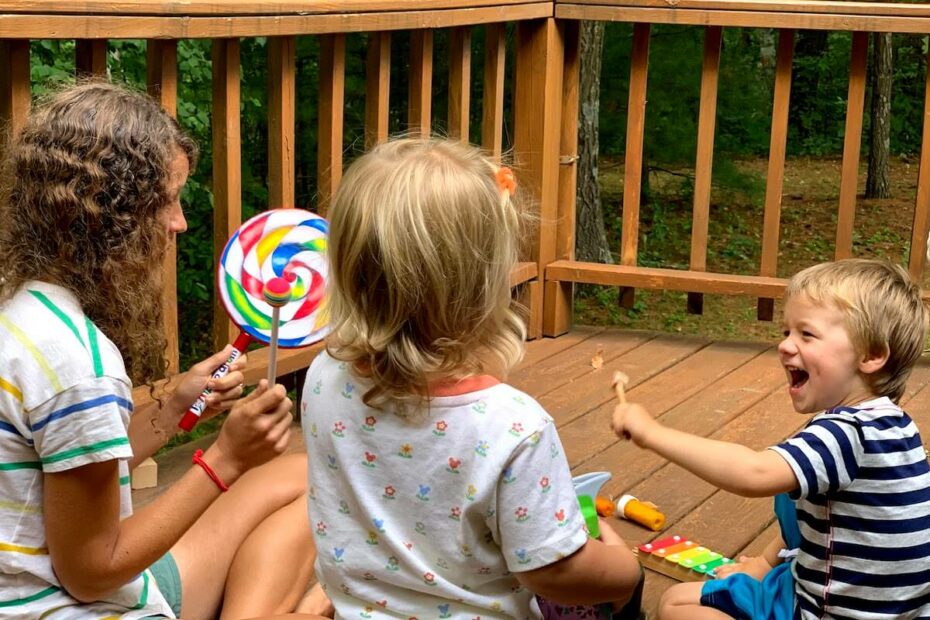Music can really enrich either a homeschool classroom or a Montessori classroom. If you don’t feel confident in your own musical abilities though, it can feel intimidating to include music in your day-to-day life with your child. It is SO worthwhile to face your fears though and intentionally include music in your home or classroom.
Here are 10 ways to include a little more music in your life!
1. Use Music for Transitions
Music is an excellent way to mark transitions in either a Montessori home or classroom.
Sing a certain song when it’s time to transition from breakfast to your Montessori homeschool routine or when it’s time for the children to put their work away and come together for lunch.
Put on some relaxing classical music when it’s time to make dinner together.
Children quickly learn that a certain song or type of music signals a certain process. This is an unobtrusive way to let children know that it’s time to wrap up what they’re doing and prepare for the next activity.
2. Include Musical Instruments on the Shelves
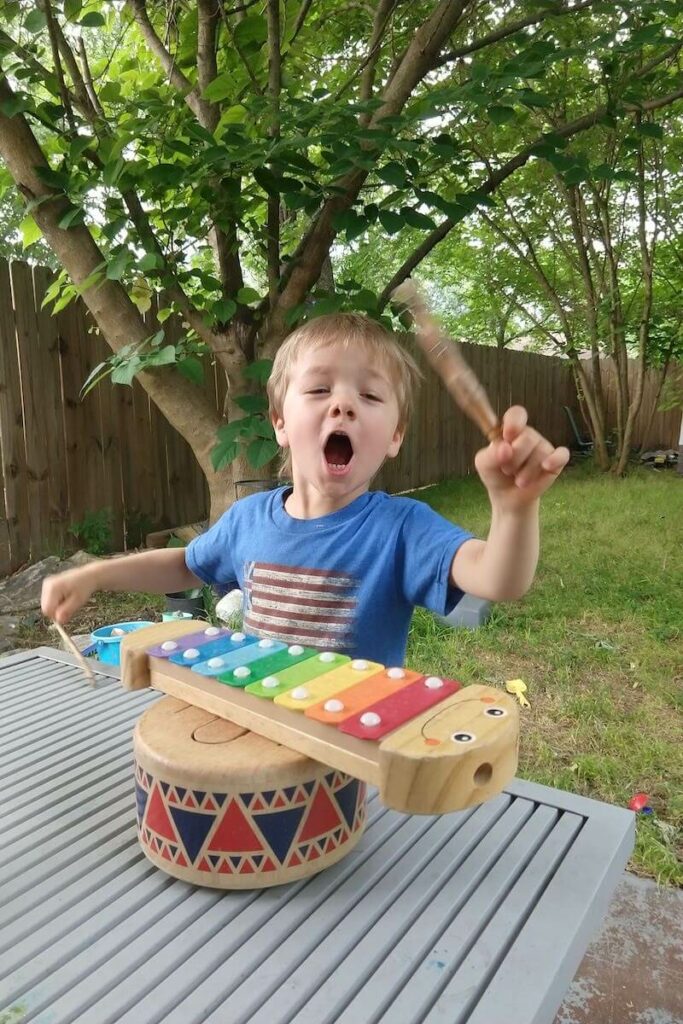
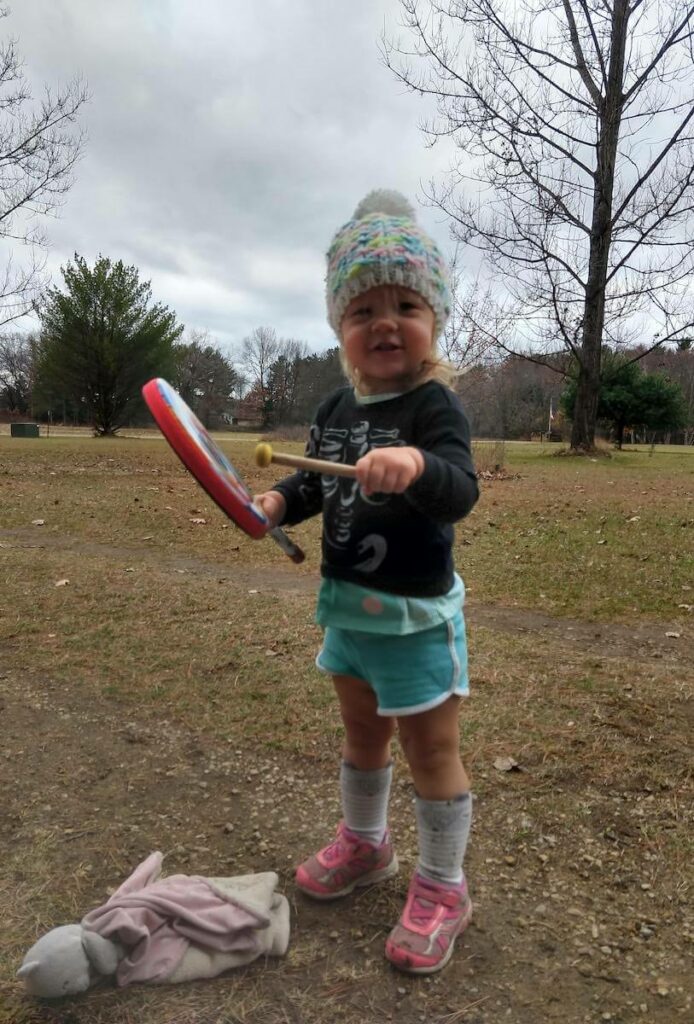
Whether you do Montessori homeschool or simply include shelves of Montessori-friendly toys for your children, musical instruments are an excellent addition.
In our home, we have certain instruments that are solely for outside (or for the basement in the winter). This includes loud drums. This is of course totally up to you but I find the super loud instruments inside make me feel overwhelmed and also distract whichever child is not playing instruments at the time.
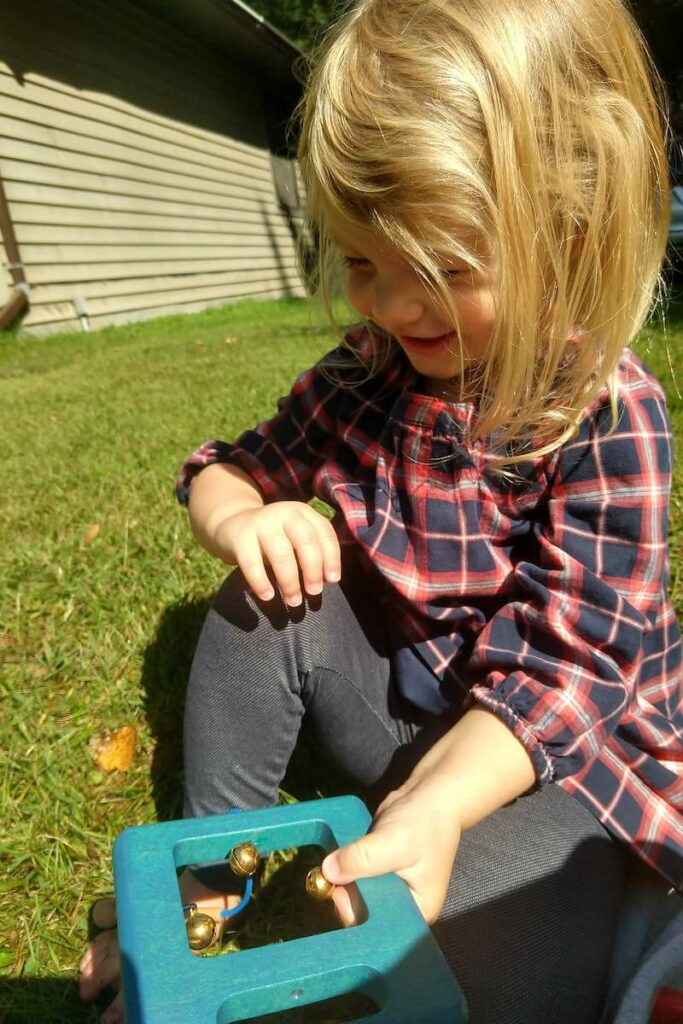
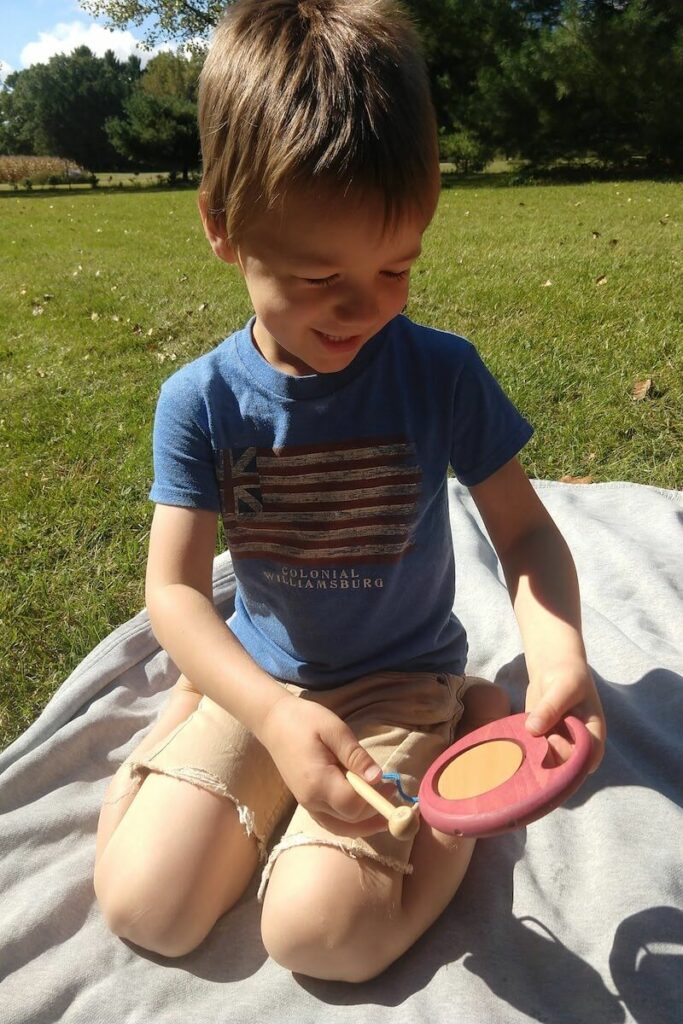
There are plenty of quieter instruments that are appropriate for indoor use though. I love the kiko & gigi* trio of musical instruments for indoor use. They’re percussion instruments but they’re not too loud. Each instrument makes a different sound and I appreciate the fact that each one is played differently (rather than simply banging). (Disclosure – this is not sponsored but I was sent a complimentary set of these instruments to review. All opinions are my own!)
Other instruments that are nice for indoor Montessori shelves are maracas, rhythm sticks, and the “croaking” frog you’ll find in many Montessori classrooms.
3. Play Rhythm Games
Rhythm games are something anyone can do, no materials required! You don’t even need any musical instruments. Clap your hands, pat your legs, or drum on the floor to create different rhythms.
Start by clapping a rhythm a couple of times and then inviting your child to join in, clapping along with you. Once they’re comfortable clapping rhythms with you, clap a rhythm and invite them to clap it back to you on their own.
Make sure to give your child a chance to be the leader and make up their own rhythm for you to clap back!
Play this game often, either with clapping or simple instruments. This is a good activity for transitions, either before beginning academic work or at the end of academic work for the day.
4. Learn About Different Musical Instruments
In addition to experiencing music, take some time to learn about different instruments. Young children, of course, learn best from hands-on experiences. Any time you’re able to show them a real instrument or bring them to a live musical performance (in non-Covid times), do it!
Even when real-life musical experiences are not possible, you can learn about different instruments with the help of 3-part cards. You can buy cards through Montessori Services here or use a printable like this set, which corresponds to the Safari Toob instruments. I also like that this Etsy shop has cards for instruments from different regions of the world. This would be fun to combine with a continent study!
If you do use 3-part cards, make sure to take some time and listen to some music for each instrument. For example, you can easily search “violin music” on Spotify or YouTube and find samples of each instrument to play for your child.
5. Draw What You Hear
Listen to different types of music and invite your child to draw what they hear! Talk about how different types of music can make us feel different ways. Some songs tell a story while others just evoke a feeling. How might you draw a fast song differently than a slow song? How might you paint a sad song differently from an upbeat one?
This is a really fun way to encourage creative expression as well as critical listening! It’s so easy to have music solely as a background in our lives without taking the time to really listen to and reflect on what we’re hearing.
6. Set Up a Listening Station
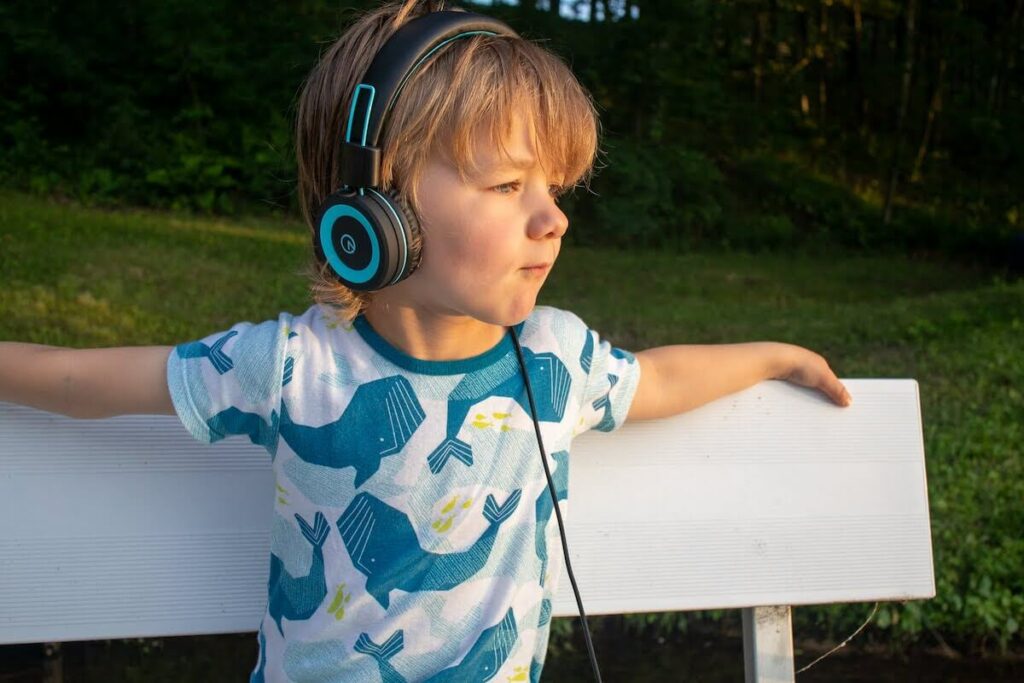
We had a listening station in the Montessori classroom I used to teach in and it was a big-time favorite with the children. Our set-up was a simple cd player with child-safe (volume controlled) headphones. We rotated the cd selection from classical music to the Beatles to audiobooks from the library. You can also find some great CDs in the For Small Hands shop here!
The listening station was an excellent calming activity that children often chose either at the start of the day or after a challenging work when they needed a break.
7. Learn About Composers
Once children reach 5 or 6, they may become interested in the actual composers (or bands) behind the music.
A fun way to study composers is to have a “composer of the week” or “composer of the month.” Choose a certain time of day, such as breakfast, to listen to that composer. Then read a book about the composer. (This series is great or you can check your library!)
Over time, your child will start to recognize the differences between the music from different composers. Make sure to include composers and music from all over the world!
8. Match Pitch
Similar to rhythm games, you can play pitch games with your child.
Talk about high pitches versus low pitches. Take turns talking or singing in a very high pitch and then a very low pitch. Make it fun!
Then invite your child to play a game where you take turns singing a note, then trying to exactly match the other’s note. You can keep this really simple with just singing random notes OR try it with a piano or, if you don’t have one, a pitch pipe! (I haven’t personally used one, but there are also apps like Pocket Pitch if you don’t have a piano or pitch pipe.) Play a certain note and then try to copy it with your voice. Invite your child to do the same!
Keep it fun and laugh at your mistakes. This is all just to encourage your child to listen critically and begin to explore the different elements of music.
9. Use the Montessori Bells
Due to the price, most Montessori homeschool classrooms won’t have the Montessori bells but I couldn’t exclude them because I love them so much! (I haven’t seen them in-person so can’t vouch for the quality, but I did find a much less expensive version here! If anyone has used these, I’d love to hear how they compare.)
The Montessori bells contain two sets of bells, with each bell corresponding to a certain note. Children learn to care for the bells and handle them gently, how to play a scale, and eventually how to match the bells (i.e., matching the ‘C’ bell from one set to the ‘C’ bell from the other set only by sound.)
This is a special and much-loved work within the Montessori classroom!
You can play a similar sound game with two sets of these bells. Your child will have one set and you will have another, out of sight from your child. You play one bell (where your child cannot see, or they will just match by color) and invite your child to find their bell that matches the pitch. This simple game is a great way to practice pitch, it just lacks the independence of the true Montessori work.
10. Don’t Play Music All the Time
This last one isn’t exactly an activity, but it is important!
Especially if you are doing homeschool, avoid playing music in the background all of the time. Some children (and people in general) focus better with music playing but others do not. Having music in the background all day can make it harder for some children to focus on their work or play. Make sure to have some quiet times built into the day for focus and other times when children can intentionally listen to and enjoy music.
As your child gets older, you may want to experiment with how music affects their focus. It’s different for everyone!
Our Favorite Musical Instruments for Kids
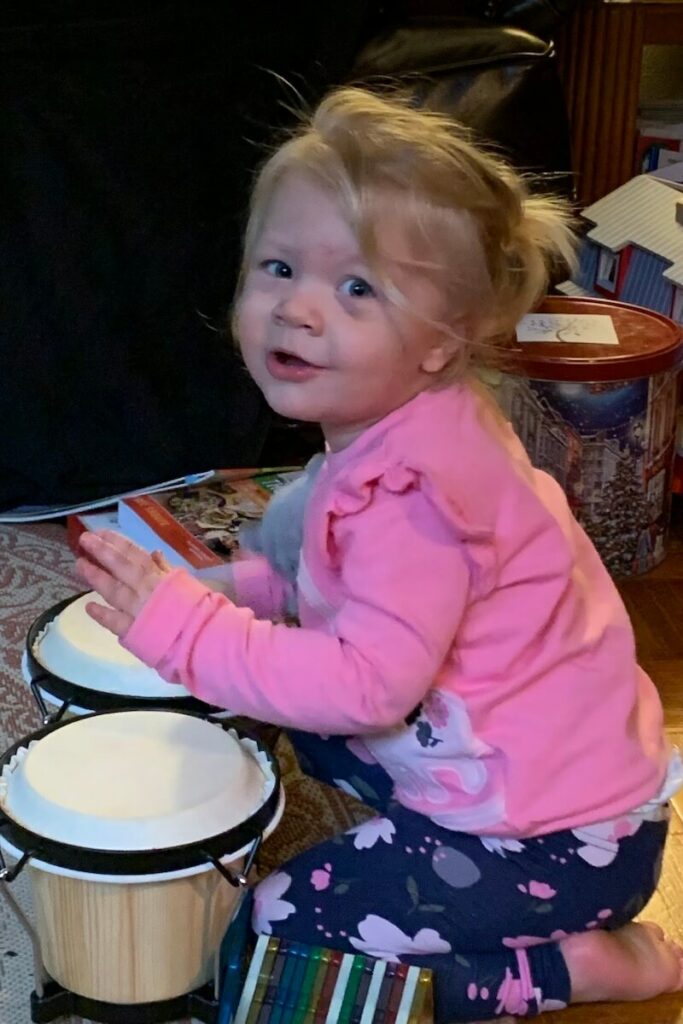
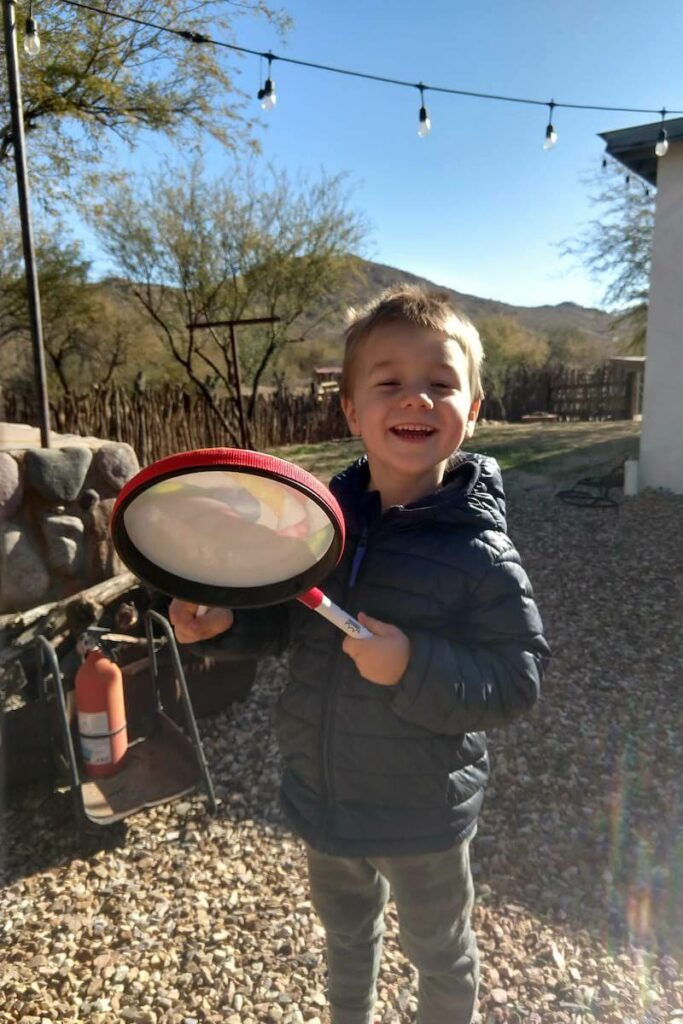
Along with all of the formal lessons and activities, there is so much value in just providing instruments and encouraging your children to experiment with making music. Both of my children love playing with musical instruments and we have developed some favorites over the years. Here are a few we love:
Bongo Drums: My son got these bongos for Christmas last year and they’re great! They’re well made and have a nice sound.
Lollipop Drums: Each of my children has one of these drums because they like to play them at the same time. These are great for kids who like to walk around while singing and drumming (like my kids!)
Kiko & gg* Trio of Instruments: As I mentioned above, we were recently sent these and they’re beautiful! They are high quality with interesting sounds.
Harmonica: A harmonica is a great way to enable children to make different kinds of sounds than they can make on drums and percussion instruments. They can sound great right away!
We also use tambourines, bells, rhythm sticks, and so many homemade instruments! My kids love making shakers out of empty cans, toilet paper tubes, etc. They enjoy collecting objects to fill them with and decorating their homemade instruments. This is something we did a lot while traveling last year!
I plan to add an instrument like this one to our collection soon so my older child can begin to learn the concept of reading notes to play a specific song, in addition to his creative, experimental music.
This post contains affiliate links. Thank you for your support!
